Sightseeing
- [수원유람] 시간의 흐름 공간의 멈춤 사...
수원문화재단
- [골목산책] 달인을 만났을 때, 차가웠던...
수원문화재단
20호 [수원유람] 시간의 흐름 공간의 멈춤 사람의 이야기 다시 문화로 잇다
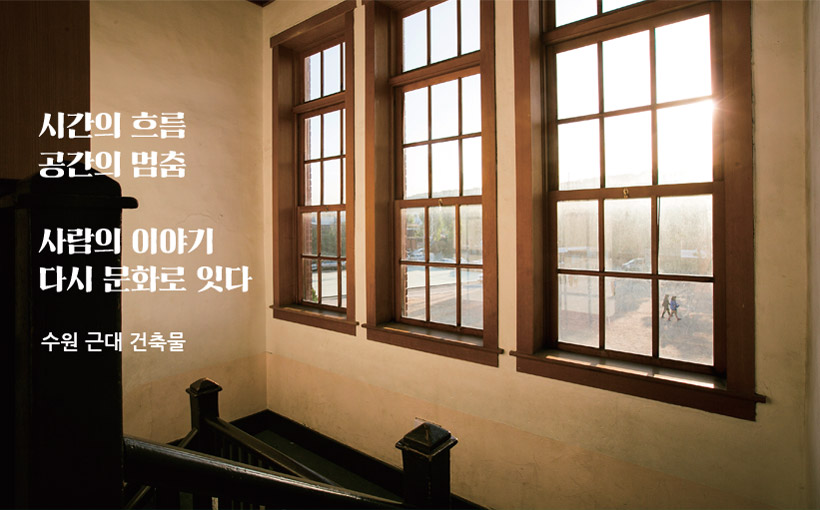
[수원유람]
시간의 흐름 공간의 멈춤 사람의 이야기 다시 문화로 잇다
살롱에서는 '오빠는 풍각쟁이야~'란 대중가요가 흘러나오고, 모던보이 모던걸이 다방과 카페에서 만나며 경성을 활보하던 그 시절.
영화에서만 보았던 근대의 흔적들을 수원에서도 만날 수 있다. 빛바랜 빨간 벽돌에 스치는 그때 그 시절의 이야기를 다시 써내려 간다.
글 강일서 사진 김오늘, 경기도 · 수원시 제공
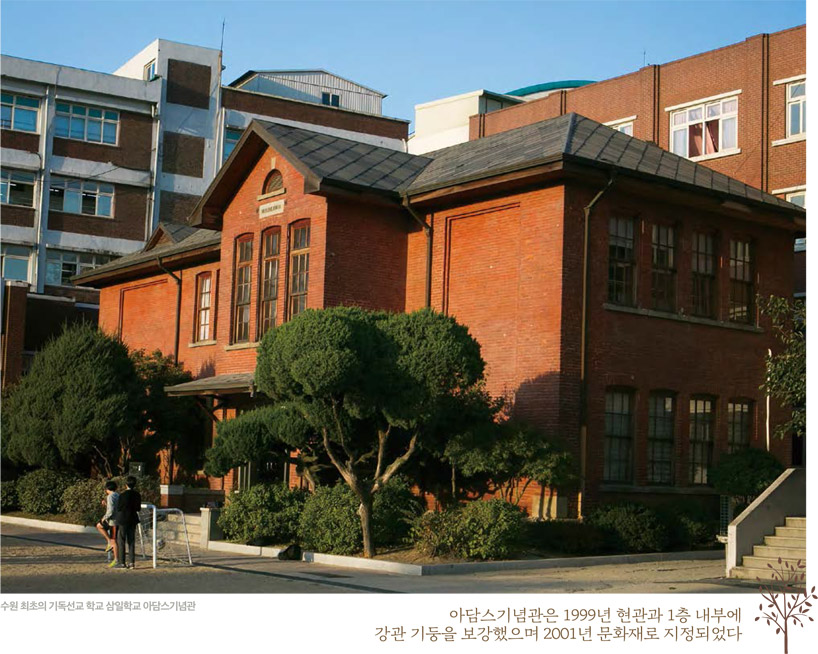
수원천과 함께 흐른 100여 년의 역사
먼저 화홍문에서 팔달문 방향으로 수원천을 따라 걸어가면 흰색의 낡은 건물에 동신교회라는 작은 교회를 찾을 수 있다. 동신교회는 1900년에 지은 수원에서 가장 오래된 교회이며, 일본인 최초의 선교사인 노리마쯔 마사야스 목사의 비석이 있는 곳이기도 하다. 노리마쯔 마사야스 목사는 명성황후가 시해된 을미사변 이후 일본인으로서 양심의 가책을 느끼며 이 일을 계기로 조선에 들어와 동신교회를 세우고 선교활동에 매진하게 된다. 그런 그가 죽기 전 유언으로 조선 땅에 묻히기를 원해서, 1921년 휴양 중이던 일본의 오다하라에서 세상을 떠나게 된 이후 신도들이 그의 유골을 지금의 광교산 자락에 묻게 되었다. 그런데 해방 이후 그 자리에 보훈병원이 들어서며, 비석은 지금처럼 교회의 뒤편으로 옮겨지게 되었다. 동신교회 근처에는 종로교회도 있는데 1899년 신앙의 공동체로 시작한 수원의 첫 개신교회다. 1901년 하반기에 보시동 116번지에 보시동교회(옛 수원종로교회의 교회명)를 세우고, 그 후 6년이 지난 후인 1907년에 수원 종로 네거리로 이전했으며, 현재 교회의 모습이다. 건축 당시 붉은 벽돌을 쌓아올린 건물 외관에 큰 유리창을 내고 유리창은 스테인드글라스 기법으로 장식했다.v 또 수원천 주변에는 삼일학교와 매향여학교가 마치 서울의 배재학당과 이화학당처럼 수원 중포산 기슭에 담 하나를 사이에 두고 나란히 붙어 있다. 삼일학원은 1903년 미국인 선교사 스웨어러W.swearer, 서원보가 15명의 소년들을 모아 시작한 교회부설 학교다. 처음에는 자체 건물 없이 교회 건물을 빌려 사용했으나 이후 교인들로부터 건립기금 2만 엔을 기부 받아 아담스기념관이라는 이름으로 1923년 문을 열었다. 전체적으로 적벽돌을 사용했으며 지붕은 벽체 위에 목조 트러스를 올리고 널판을 깔아 함석판을 올린 구조이다. 지하층은 거칠게 다듬은 돌로 쌓았고 1층과 2층은 적벽돌로 벽체를 쌓았으며, 층간에 목조 마루틀을 설치하여 바닥을 꾸몄다. 아담스기념관은 1999년 현관과 1층 내부에 강관 기둥을 보강했으며 2001년 문화재로 지정되었다.
매향학교는 1941년 역시 미국 북감리교의 스크랜튼 선교사가 시작한 학교이다. 매향학교는 주소가 매향리이기 때문에 교명을 그렇게 정했던 것 같다. 삼일학교와 매향학교의 앞에 흐르는 수원천과 양뚝에 줄지어 서 있는 버드나무들이 오래된 붉은 건축물과 조화를 이루며 그럴듯한 경관을 만들어낸다. 다시 수원천을 따라 통닭골목 쪽으로 조금만 걸으면 동남각루와 함께 전국 3대 포교당 중 하나로 꼽히는 수원사水原寺에 도착한다. 수원사는 한국 최초의 포교당 각황사(현재 조계사), 강릉포교당과 함께 전국 3대 포교당으로 불리며 근대불교 도심포교의 상징이었다. 1912년 용주사 수원포교당으로 건립된 이곳은 일제강점기 도심포교를 진행했다. 1957년 화광사華光寺로 이름을 바꿨다가 지금은 수원사로 불리고 있다. 수원사의 본 법당인 극락대원전極樂大願殿은 1912년 창건 당시에 지어진 건물로 100여 년이 지난 지금도 그 모습을 온전하게 간직하고 있다. 극락대원전 월대의 좌측에는 사자모양의 동상이, 우측에는 용 형상의 조각이 세워져 있다. 수원사는 도심포교 뿐만 아니라 근대문화 산실의 역할도 했는데 1929년 9월 한국 최초 여성화가인 나혜석 전시회를 수원사에서 열기도 했으며, 현재는 주민들에게 휴식공간의 역할도 겸하고 있다.
일제강점기 이후 근대건축물의 활용
수원천을 지나 방향을 틀어 남문의 인쇄 골목에 들어서면 수원교회 맞은편에 부국원이 있다. 부국원은 일제강점기 시절에 만들어진 건축물로 최초 종묘와 종자, 농기구를 보급한 회사였던 ㈜부국원의 본사 건물이다. 해방 이후 검찰청, 공화당사, 수원법원ㆍ검찰 임시청사 등 다양한 용도로 쓰이다가 1980년대 이후 개인병원으로 사용되기도 했다. 지금은 개인소유였던 부국원 건물이 2015년 철거 위기에 놓이자 수원시가 매입해 현재 등록문화재 지정을 앞두고 있다.
부국원을 지나 팔달구보건소 방향으로 쭉 걸어가다 보면 수원시가족여성회관 건물을 만난다. 붉은색 벽돌과 콘크리트로 지은 2동의 건축물은 한국전쟁 이후, 각 지역의 관공서 건축이 한창일 때 세운 건물이다. 철근콘크리트로 지은 메인 건축물은 외부를 석재로 마감해 중후함을 더하고, 출입구 부분의 캐노피와 창 모듈 등의 비례에서 당시 유행이던 모더니즘 건축의 영향을 읽을 수 있다. 1980년대 수원 남부지역으로 시청이 옮겨가기 전까지 시청사 건물이었다가 권선구청으로, 현재는 수원시가족여성회관으로 사용되고 있다. 바로 옆의 붉은 색 건물은 1956년 당시 역전동 가로변의 수원읍사무소 자리에 세운 옛 수원시청사로, 지상 2층 규모의 벽돌조 건물이다. 평면은 거의 정방형에 가깝고, 모임지붕 형태로 되어 있으며 시멘트 기와를 이었다. 특히 1층 창호의 상인방에는 꽃봉오리 모양의 장식을 만들고, 2층 창호의 상인방에는 상·하면에 수평 돌림띠를 돌려 장식했다. 건물의 각 부분에서 볼 수 있는 디테일이 아르데코적인 분위기를 풍기고 있다. 이대로 길을 따라 가다보면 경기도청에 이른다. 이곳에도 예전 모습을 간직한 건축물이 있다. 1967년 건립된 경기도청 구관은 역사가 깊은 철근콘크리트 건물이다. 신청사와 함께 지금까지 그 기능을 하고 있지만 세월의 흔적이 곳곳에 남아 운치를 선사한다. 20세기를 대표하는 우리나라 원로 건축가 중 한 사람인 고故 김희춘 건축가의 대표작이기도 하다. 건물의 외형을 보면 철근 콘크리트 구조의 뼈대가 노출되게 하고 외벽을 유리창으로 감싸고, 각 층마다 4면에 테라스를 두어 업무실에서 바로 외부공간과 연결되도록 했다. 건물은 ‘口’자 모양으로 되어 있고 중정을 가운데에 두고 있다. 이러한 건물 형태는 1960년대에 남부지방에서 크게 유행하던 통풍과 채광을 고려한 개방적 디자인이다.
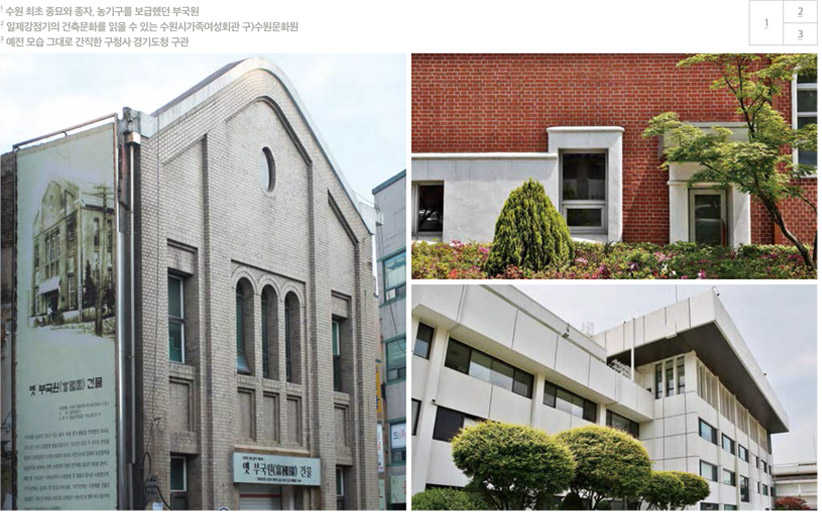
도청을 지나 수원의 관문인 수원역까지 오면 근대 철도 역사의 문화를 간직한 철도문화재를 볼 수 있다. 수원역에서 나와 오산 방면 세평 지하 차도 쪽으로 가다 보면 오른 편 길 가에 굴뚝처럼 생긴 두 개의 급수탑이 보인다. 나란히 서 있는 2기의 탑은 그때 당시 상수도 시설이 없어 석탄을 연료로 하는 증기펌프를 가동해 급수탑 상층부 수조로 끌어올린 다음, 낙차를 이용해 플랫폼의 증기기관차에 물을 급수하던 시설이었다. 급수탑은 1950년대 UN군이 디젤기관차를 사용하기 전까지 사용되었고, 좀 더 큰 시멘트 급수탑은 주로 완행열차에, 붉은 색 급수탑은 수인선과 수여선의 협궤열차에 물을 공급했다.
끝으로 우리나라 잠업의 역사를 알 수 있는 잠사과학박물관이 있다. 우리나라의 잠업은 약 5천 년에 달할 만큼 그 역사가 깊다. 전국 각 지역마다 잠업으로 유명한 곳이 있는데, 수원에는 잠업시험장(전 농업과학기술원 잠사곤충부)이 1917년부터 터를 잡아 연구를 해왔다. 잠사과학박물관 건물은 1935년부터 고치로 비단실을 만드는 연구에 쓰인 장소였다. 1999년 6월 29일에 박물관으로 개관했으며 내부는 전시 기능을 위해 개조되었지만 지붕과 외벽 등에는 건립 당시의 공장, 실험동의 건축 특징이 고스란히 남아 있다.

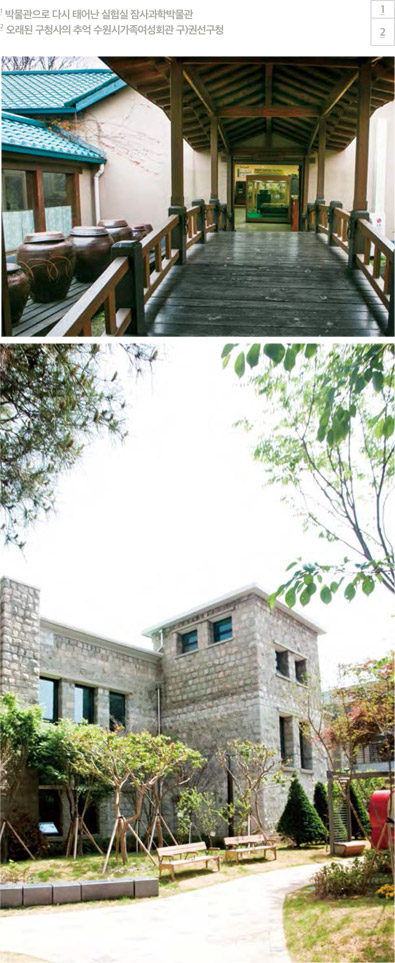
이렇게 수원의 근대건축물을 한 바퀴 돌고 나니 뭔가 모를 아쉬움이 든다. 문화재로 관리되고 있는 건축물도 있지만 대부분 개인 사유지로 귀속됐거나 철거 또는 방치되어 복원의 손길을 기다린다. 이 건축유산들은 한 자리를 외롭게 지키며 100여 년 동안 수원 사람들의 삶을 오롯이 기억하고 있을 것이다. 이제는 부서지고 지워진 근현대사의 이야기들이 보전되어 더 많은 사람들과 함께하기를 기대해 본다.

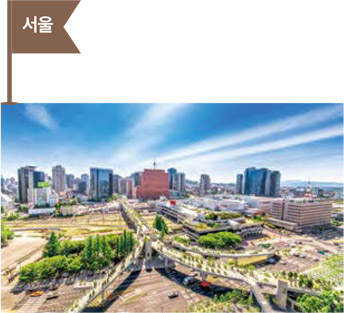
서울로 7017
이렇게 수원의 근대건축물을 한 바퀴 돌고 나니 뭔가 모를 아쉬움이 든다. 문화재로 관리되고 있는 건축물도 있지만 대부분 개인 사유지로 귀속됐거나 철거 또는 방치되어 복원의 손길을 기다린다. 이 건축유산들은 한 자리를 외롭게 지키며 100여 년 동안 수원 사람들의 삶을 오롯이 기억하고 있을 것이다. 이제는 부서지고 지워진 근현대사의 이야기들이 보전되어 더 많은 사람들과 함께하기를 기대해 본다.
홍난파의 집과 경성방직 사무동
홍파동 홍난파의 집은 홍난파 선생이 1935년부터 세상을 뜰 때까지 머무른 집으로 홍난파 선생의 기념 전시관, 공연장 등으로 운영 중이다. 또 영등포 타임스퀘어는 경성방직이 있던 곳이다. 현재는 1936년 민족자본으로 설립된 방적업체 ㈜경성방직의 사무동이 남아있으며, 아직 원형이 잘 보존되어 있다. 현재는 로스터리 카페 '커피 리브레'가 사용 중이다.
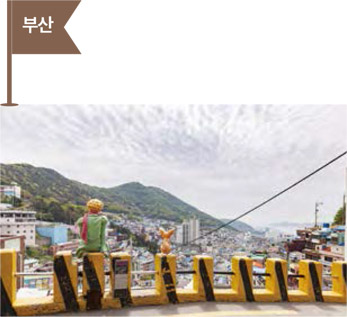
감천문화마을
감천문화마을은 일명 태극마을이라고 불리던 곳으로 감천항이 내려다보이는 골짜기에 자리 잡은 흔히 말하는 달동네다. 이 곳은 마을의 원형은 보존하되 폐가와 골목 곳곳에 예술 작품을 설치하고 벽화를 그려 넣었다. 승효상·조성룡 등 유명 건축가의 재능기부로 폐가를 갤러리로 리모델링했다. 지금은 한국의 마추픽추, 산토리니라는 별명을 얻게 되었다.
백제병원과 고려제강
부산역 앞에 위치한 카페 ‘브라운핸즈 백제’는 과거 ‘백제병원’ 건물을 개조했다. ‘백제병원’은 1922년 설립됐으며 서양식 건물로 부산 최초의 근대식 개인병원 건물이었다. 붉은색 벽돌과 오래된 벽타일 등은 빈티지 카페 분위기를 연출하며, 현재는 문화재로 지정되어 있다. 또 테라로사 수영점은 버려진 고려제강의 옛 창고를 개조하여 새로운 핫 플레이스로 떠오르고 있다.
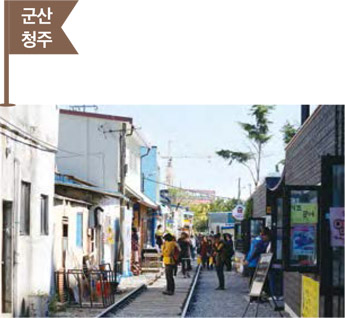
군산 근대역사박물관
군산은 1930년대 우리나라의 역사적 발자취가 남아 있는 곳이다. 그래서 2000년대 들어 근대산업 유산을 활용해 예술 창작 공간 조성사업을 펼쳐왔다. 근대역사박물관을 시작으로 군산세관, 미즈상사, 장미갤러리, 근대미술관, 근대 건축관, 진포해양공원까지 시간을 따라 여행하다 보면 그곳에 숨은 우리의 문화와 역상, 예술의 향기를 느낄 수 있다.
청주연초제조창
1946년 건립되어 2004년 폐창 이후 7년간 방치되었던 옛 청주연초제조창을 2011년 이래 청주국제공예비엔날레 개최 장소로 활용하게 되었다. 이것은 단순히 문화 공간의 탈바꿈을 넘어 국내 최초로 도심 재창조를 위한 기초를 다진 선례다. 옛 청주연초제조창은 국립현대미술관 청주관, 공예클러스터 조성 등을 통해 청주 문화예술의 새로운 르네상스를 꿈꾸고 있다.
수 원 근 대 문 화 유 산 로 드 맵
과거의 흐름을 따라 현재와 조우하다
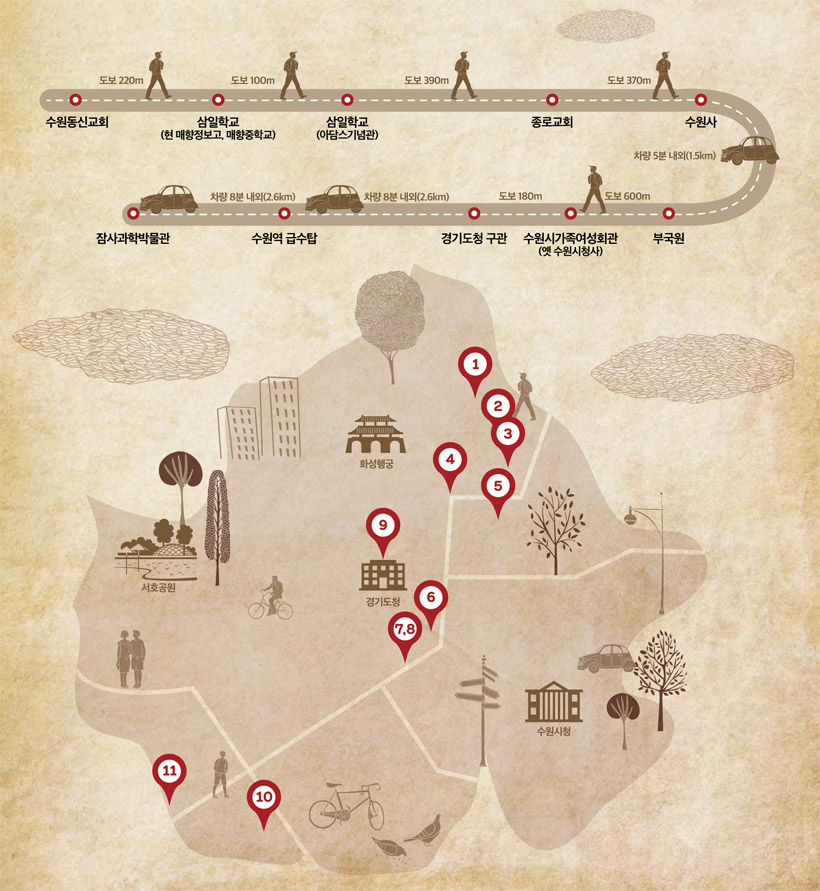
1. 동신교회
주소 수원시 팔달구 수원천로 370
분류 종교·제례 시설
연도 1900년대
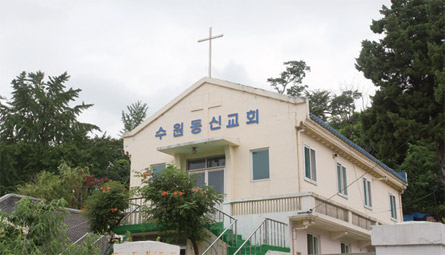
2. 삼일중학교 아담스기념관
주소 수원시 팔달구 수원천로 342(매향동)
분류 교육·연구 시설
연도 1923년
지정 시도기념물 제175호
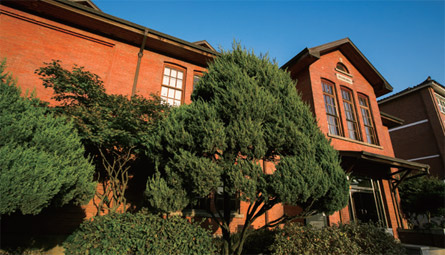
3. 삼일학교(현 매향여자정보고등학교, 매향중학교)
주소 수원시 팔달구 수원천로 350
분류 교육·연구 시설
연도 1920~1950년대
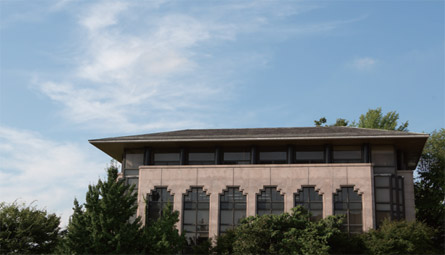
4. 종로교회
주소 수원시 팔달구 정조로 830
분류 종교·제례 시설
연도 1907년
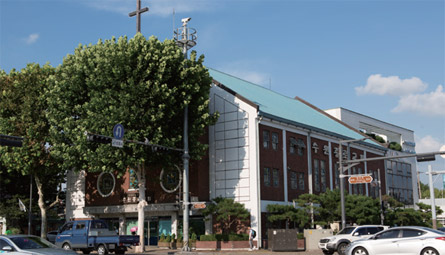
5. 수원사
주소 수원시 팔달구 수원천로 300
분류 종교·제례 시설
연도 1920년
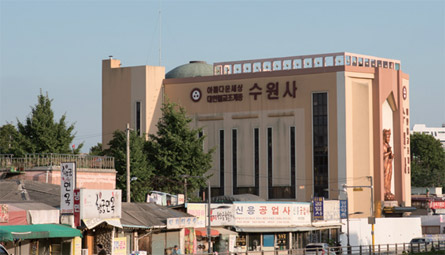
6. 부국원
주소 수원시 팔달구 향교로 130
분류 업무·생산 시설
연도 일제강점기
지정 문화재청 등록문화재 등록 예고 중
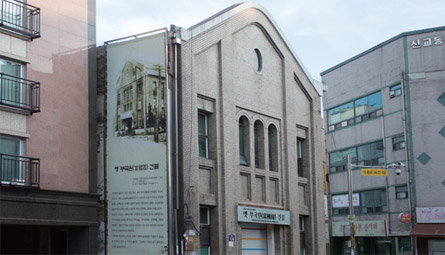
7.수원시가족여성회관 구)권선구청
주소 수원시 팔달구 매산로 119(교동)
분류 공공기관·시설
연도 1956년
지정 향토유적 제18호
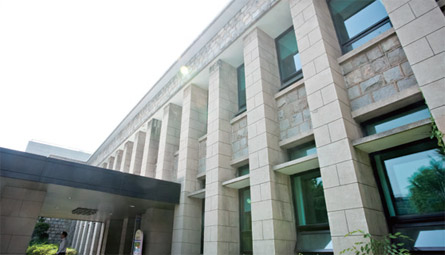
8.수원시가족여성회관 구)수원문화원
주소 수원시 팔달구 매산로 119(교동)
분류 공공기관·시설
연도 일제강점기
지정 수원시 향토문화유적 제18호
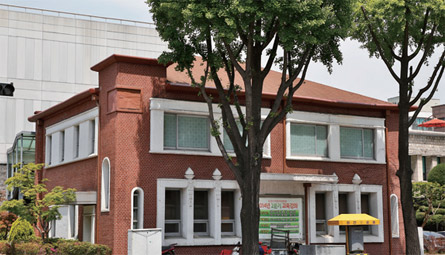
9.경기도청 구관
주소 수원시 팔달구 효원로 1(매산로3가)
분류 공공기관·시설
연도 1967년
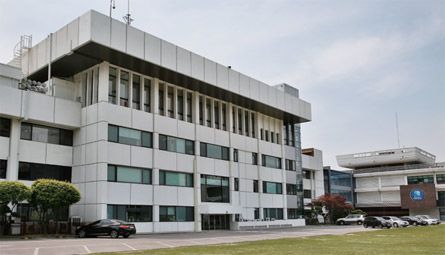
10.수원역 급수탑
주소 수원시 권선구 덕영대로 960 한국철도공사서부 본부별관 근처
분류 도로·교통 시설
연도 일제강점기
지정 준철도 기념물(제11-시-02) 14, 15호
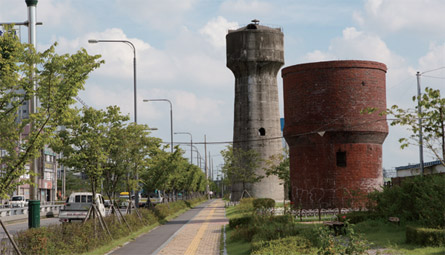
11.잠사과학박물관
주소 수원시 권선구 서호로 54(서둔동)
분류 문화·체육 시설
연도 1935년
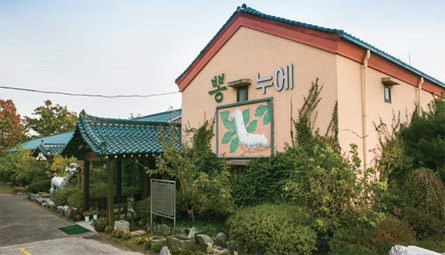
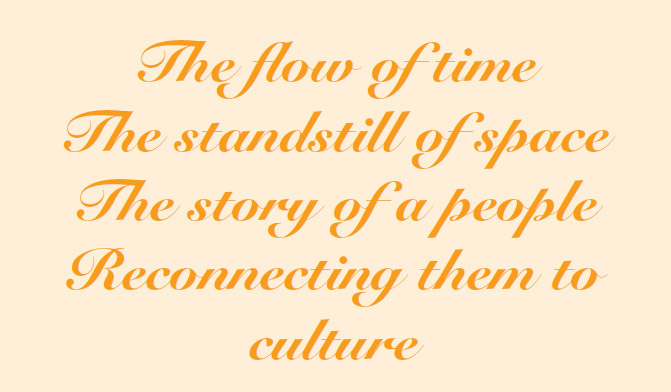
Popular music titled, “You are a street singer” was playing in a salon, It was a time when modern boys and girls would prance around Gyeongseong, meeting at coffee shops and cafes You can still see traces of Suwon’s modern times that could only be viewed in old movies. I am writing a story of the time and place that is inspired by faded red bricks.
Written by Gang Il-seo Photo Kim O-neul
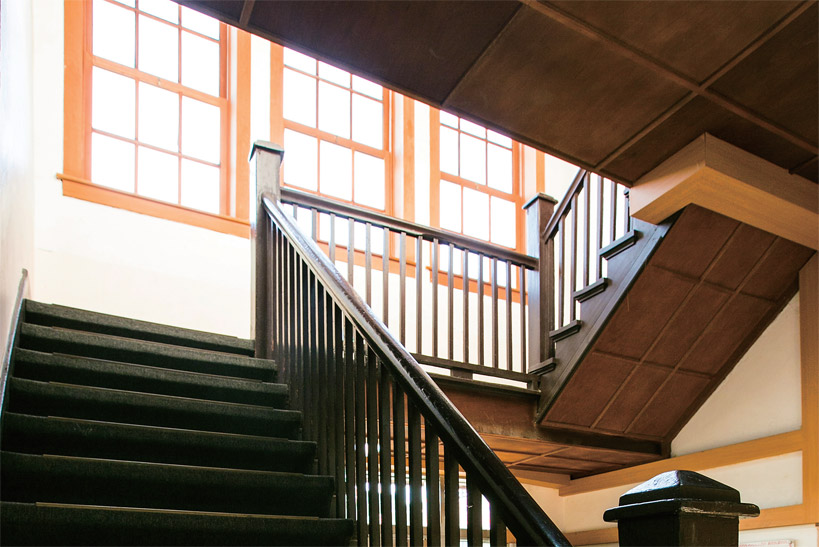 Adams Memorial Hall
Adams Memorial Hall
Suwon began to develop in earnest at the time of the completion of Suwon Station of the Gyeongbu line was completed (1903). Since then, based on Suwon Hwaseong, the center of administration, culture and economy, buildings began to be erected one by one while boasting of their appearance. While walking along Suwoncheon stream, embracing the quiet and still view of Hwaseong, the modern buildings seize the steps of people passing by.
100 years of history flow along Suwoncheon stream
First, when walking from Hwahongmun to Paldalmun along the Suwoncheon stream, you can find a small church called Dongsin Church, which consists of an old white building. Dongsin Church is the oldest church in Suwon, built in 1900, and it is the place where the tombstone of Norimatzu Masayaz, the first Japanese missionary, is positioned.
As a Japanese, the priest Norimatzu Masayaz felt guilty about the death of Empress Myeongseong after the Eulmi Incident, and devoted himself to missionary activities by establishing Dongsin Church in Korea using the incident as a source of motivation. He desired to be buried in Korea before his death, so his follower buried his remains at the foot of present day Mt. Gwanggyosan after passing away in Odahara, Japan, while on furlough in 1921. However, as the Korean Veteran’s Hospital was later built here position, the tombstone was moved to the back side of the church.
There is Jongno Church near Dongsin Church, and it was the first Protestant church in Suwon which was started from a community of believers in 1899. They established the Bosidong Church (Former name of the Suwon Jongno Church) at 116 Bosi-dong in 1901, and moved to the Suwon Jongno intersection after 6 years in 1907. This is the present look of the church. When building this church, the exterior was decorated by piling up red bricks while installing a large window, and decorating the window again with stained glass.
In addition, there is the Samil School and Maehyang Girl’s School nearby the Suwoncheon stream just like with the Paichai and Ewha High Schools of Seoul, and they are positioned alongside a wall at the foot of Mt. Jungposan in Suwon. The Samil Institute is a school affiliated with the church which was started by the American missionary W. Swearer (Seo Won-bo) in 1903 by gathering 15 boys. They used the church building to teach classes in the beginning, however, the school opened in 1923 under the name of Adams Memorial Hall as the believers raised a construction fund of 20,000 yen.
Overall the building was built with red bricks, and the roof was constructed by a galvanized iron sheet covering after placing a wooden truss on the wall, and laying thick boards over it. The basement was built by piling up roughly trimmed rocks, and the walls of the 1st and 2nd floor were built with red bricks. The floor was decorated by installing wood plates between floors. The porch and the interior of the 1st floor of Adams Memorial Hall were reinforced by installing iron pipes to support the columns, and it was designated as a cultural asset in 2001.
Maehyang School was also started by the missionary Scranton of the America’s North Methodist Church in 1941. It seems that the school name Maehyang was decided on because it was located in Maehyang-ri. The willow trees standing in a row along both sides of Suwoncheon stream, which flows in front of the Samil School and the Maehyang School, create a great view while harmonizing the old and red buildings.
Again, when walking along Suwoncheon stream towards the chicken alley, you will reach Suwonsa, one of the 3 mission centers together with Dongnamgaknu. Suwonsa is called one of the 3 mission centers together with Gakhwangsa (Present day Jogyesa), the first mission center in Korea, and the Gangneung Mission Center, and Dongnamgaknu Suwonsa was a symbol of modern Buddhist urban propagation. This temple, which was established as Suwon mission center of the Yongjusa Temple in 1912, propagated in the city during the Japanese colonial era.
Its name was once changed to Hwagwangsa in 1957, and now it is called Suwonsa. Geuknakdaewonjeon, the main sanctuary of Suwonsa, was built when the temple was founded in 1912, and it still looks the same even after 100 years. There is a lion-shaped statue to the left of the Geuknakdaewonjeon’s stylobate, and a dragon-shaped one to the right. As Suwonsa played a role as the cradle of modern culture, as well as urban propagation, the exhibition of Na Hye-seok, the first female painter in Korea, was held here place, and it provides residents with a place to rest.
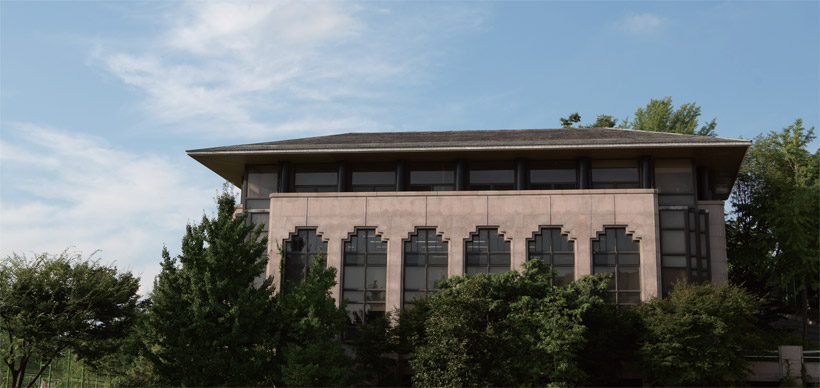 Samil School (Present Maehyang Girl’s Information High School, Maehyang Middle School)
Samil School (Present Maehyang Girl’s Information High School, Maehyang Middle School)
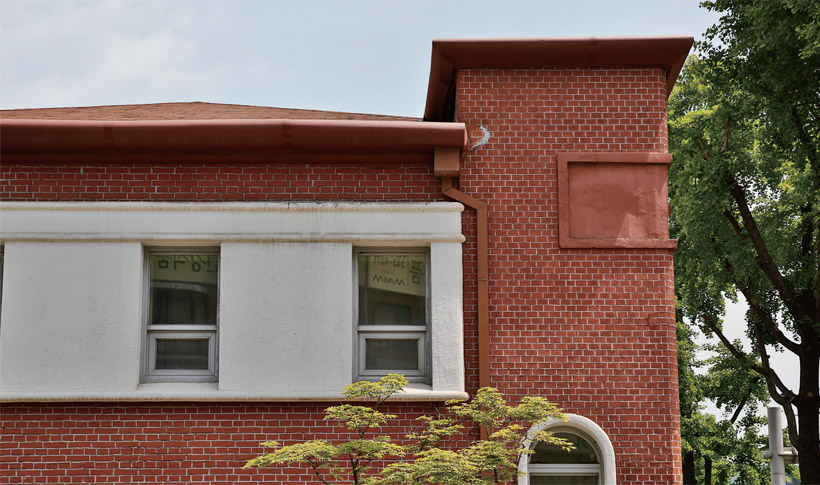 Suwon Family and Women Center (Former Suwon Culture Center)
Suwon Family and Women Center (Former Suwon Culture Center)
Utilization of modern buildings after the Japanese colonial era
Upon entering the printing alley of the south gate after passing Suwoncheon and changing direction, Bugukwon can be found on the opposite side of Suwon Church. Bugukwon is a building that was constructed during the Japanese colonial era, and it was the head office of Bugukwon, the company that supplied nurseries, seeds and farm equipment for the first time in Korea. After independence, it was put to a variety of different uses including a prosecutor’s office, offices of the Republic Party, and a temporary office of the Suwon District Court and prosecutor’s office. It was even once used as a private hospital after 1980s. The present day Bugukwon building, which was a private property, was on the brink of demolition in 2015, but the City of Suwon purchased it, and it is scheduled to be designated as a registered cultural asset.
While walking straight towards the Paldal-gu Health Center after passing Bugukwon, you can come across buildings of the Suwon Family and Women Center. Here you will see two buildings constructed of red brick and concrete, and they were established when the construction of government buildings was booming after the Korean War. The main building that was constructed with reinforced concrete looks quite dignified as the exterior was finished with stones, and we can recognize the influence of Modernism Architecture, which was popular back then, in the proportion of canopy of the entrance, and the module of the windows.
It was used as a city hall building until the time when the city office moved to the southern area of Suwon in 1980. Then, it was once used by the Gwonseon-gu office, and at present, the Suwon Family and Women Center is using this building. The red building adjacent to it was the government office building ofvthe City of Suwon which was built as a 2-story brick structure. It is a building with a nearly completely square-type floor and hipped roof, and the roof is tiled with cement material. Especially, the head jamb of the 1st floor window was decorated with bud-shaped ornaments, and that of the 2nd floor window was decorated by rotating a horizontal string course on the upper and lower surfaces. The details of each and every corner of the building create an atmosphere of art deco.
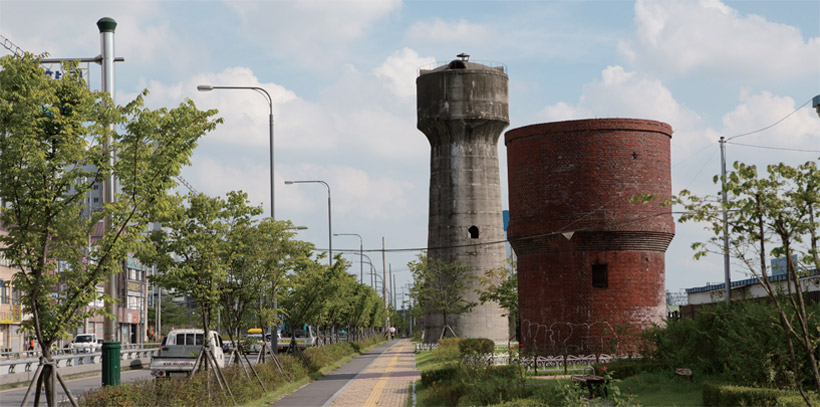 Water towers of Suwon Station
Water towers of Suwon Station
Walking along this street, you will reach the Provincial Government Office of Gyeongi-do. There is an old building as well, that is located here. The old building of the Provincial Governement of Gyeonggi-do, which was built in 1967, is a concrete building with a long history. It is still being used today along with a newer building, and it still provides us with classical grace and dignity due to the traces of times. It is also a representative work of Kim Hi-chun (deceased), one of the veteran architects of Korea representing the 21st century. With regard to the exterior of the building, the frame of the reinforced concrete structure is exposed, and the exterior wall is covered with glass windows. As there is a terrace on all four sides of each floor, the business area is directly connected to the outside spaces. It is a “ㅁ’-shaped building with a courtyard in the center. This type of building was popular in the southern area in the 1960s, and it has an open design created by considering ventilation and lighting.
Upon arriving at Suwon Station, the gateway to Suwon, after passing the provincial government building, you can view the railroad cultural assets which show the history and culture of railways of modern times. On the way to the Sepyeong underground roadway in the direction of Osan, you can come across two water towers, which resemble chimneys, on the right-hand roadside. The two towers standing alongside it were the facilities for supplying water to steam locomotives in the platform using the difference in elevation, after pulling up the water to the water tanks of the tower using a steam pump fueled with coal, since there was no water supply system back then. The water towers had been used until a time when UN forces began to use diesel locomotives in the 1950s. The bigger cement water tower mostly supplied water to local trains, and the red one was used to supply water to trains with narrow gauges on the Suin and Suyeo lines.
Finally, there is Korea Silk Museum where you can learn about the history of Korea’s sericulture. Sericulture in Korea has a long history of approximately 5,000 years. There are well-known places for sericulture in each region of the country, and in Suwon, the Sericulture Laboratory (Former sericulture and insect department of the National Institute of Agricultural Sciences) has been researching this field since 1917. The building of the Korea Silk Museum was the place for research on making silk threads using cocoons since 1935. It opened as a museum on June 29, 1999, and the interior was renovated for exhibition purposes, however, the roofs and external wall show the characteristics of the factory and testing laboratory at the time it was constructed.
After looking around the modern buildings, I somehow feel that something is missing. There are buildings managed as cultural heritages, however, most of them belong to private owners, were demolished or deserted, and are awaiting a restoration opportunity. I think these architectural heritages remember the life of Suwon citizens, while keeping their places in solitude for more than 100 years. It can be anticipated that the broken and erased stories of modern history could be preserved and shared with more people.
* Part of the scripts are the writer’s personal opinion, which were reconstituted based on the content of the Research on Gyeonggi-do’s Architecture (2012~2013), and architectural evaluations may be different. This opinion does not reflect the official position of the foundation.
1. Dongsin Church
Address : 370 Suwoncheon-ro, Paldal-gu, Suwon
Classification : Religious & ceremonial facility
Year :1900s
2. Samil Middle School / Adams Memorial Hall
Address : 342 Suwoncheon-ro, Paldal-gu, Suwon
Classification : Education & research facility
Year :1923
Designation : Provincial monument No. 175
3. Samil School(Present Maehyang Girl’s Information High School, Maehyang Middle School)
Address : 350 Suwoncheon-ro, Paldal-gu, Suwon
Classification : Education & research facility
Year : 1920s ~ 1950s
4. Jongno Church
Address : 830 Jeongjo-ro, Paldal-gu, Suwon
Classification : Religious & ceremonial facility
Year : 1907
5. Suwonsa
Address : 300 Suwoncheon-ro, Paldal-gu, Suwon
Classification : Religious & ceremonial facility
Year : 1920
6. Bugukwon
Address : 130 Hyanggyo-ro, Paldal-gu, Suwon
Classification : Business & production facility
Year : Japanese colonial era
Designation : Pending registration as a cultural asset of the Cultural Heritage Administration
7. Suwon Family and Women Center / Former Gwonseon-gu Office
Address : 119 Maesan-ro, Paldal-gu, Suwon
Classification : Public organization & facility
Year : 1956
Designation : Local relic No. 18
8. Suwon Family and Women Center / Former Suwon Culture Center
Address : 119 Maesan-ro, Paldal-gu, Suwon
Classification : Public organization & facility
Year : Japanese colonial era
Designation : Local relic of Suwon No. 18
9. Old building of the Provincial Government of Gyeonggi-do
Address : 1 Hyowon-ro, Paldal-gu, Suwon
Classification : Public organization & facility
Year : 1967
10. Water towers of Suwon Station
Address : 960 Deokyeongdae-ro, Gwonseon-gu, Suwon
Classification : Road & traffic facility
Year : Japanese colonial era
Designation : Quasi-railroad monument (No. 11-Si-02) No. 14 & 15
11. Korea Silk Museum
Address : 54 Seoho-ro, Gwonseon-gu, Suwon
Classification : Culture & sports facility
Year : 1935







